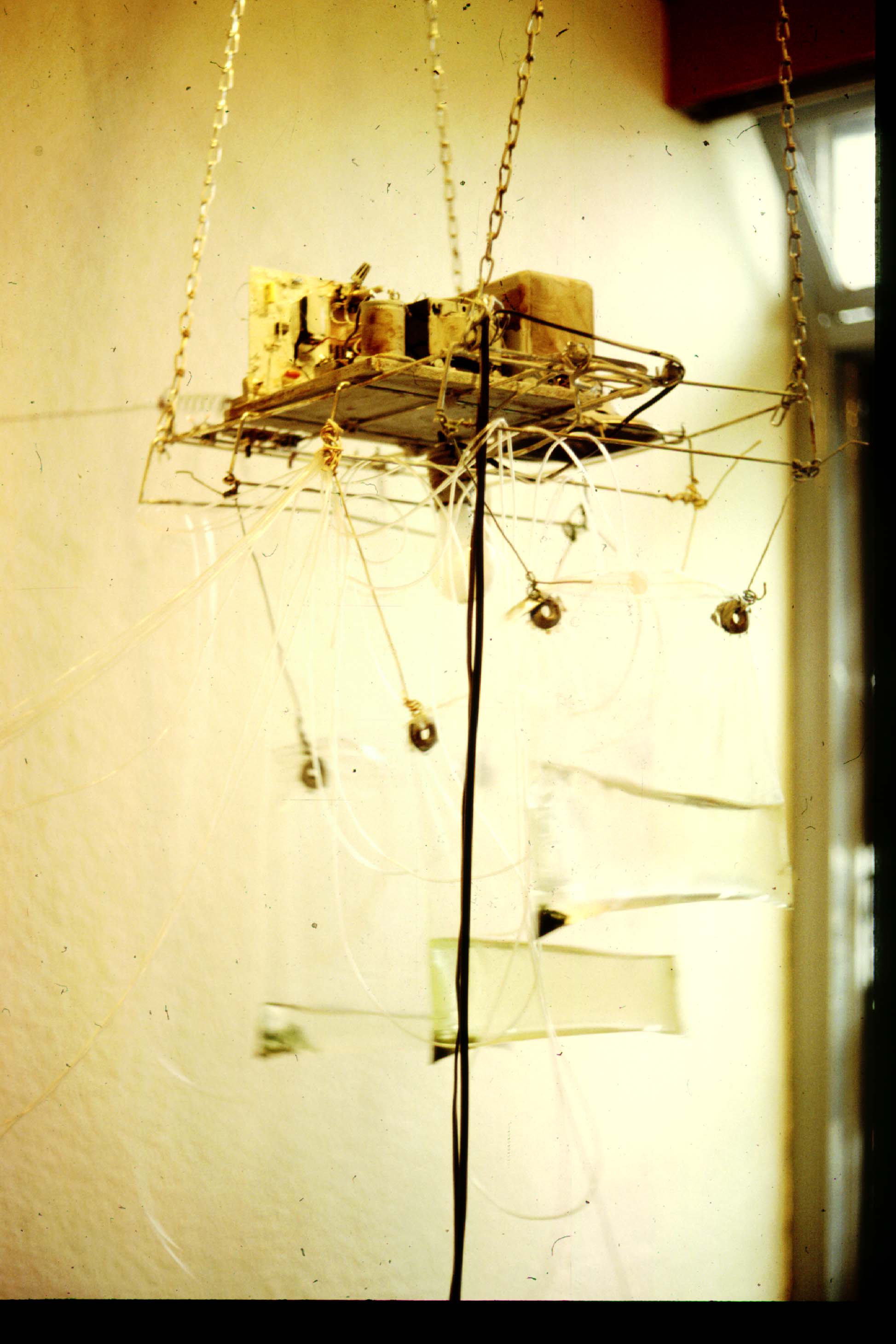Posthuman Culture

This was my first real installation. I set it up in Toronto's Eye Revue Gallery, in March of 1983, where I ultimately wound up joining the curatorial board. Posthuman Culture attempted to answer the question: "What kind of organisms could survive a nuclear war?
The work was a kind of artificial ecosystem comprised of cockroaches, blue green algae, lichens and fungi that were all connected via electronic technology. The algae produced oxygen and food for the roach colonies and the fungi and lichen were intended to sporulate and eventually colonize pulverized architectural materials that would be ubiquitous after a nuclear holocaust.
Slide Show:
gallery overview

This is an overall gallery shot of the Posthuman Culture installation. Clearly visible are the air lines as well as the cultures of lichens and fungi, which were chosen because they are organisms likely to survive a nuclear attack.
cockroach city

This is a closeup of the interconnected cockroach colonies that were installed on the floor beneath the algal ocean. The insects' movements were tracked by photoelectic cells and transformed into frequency modulated chirping noises.
algae ocean

This mechanized 'ocean' made surf noises and swung itself back and forth rhythmically. The bags contain fresh water and algae, which is helping to oxygenate the colony of cockroaches on the floor beneath it.
technological fossil

I cast several of these 'technological fossils' in plaster to simulate how the residue of the human species might appear in the future.
